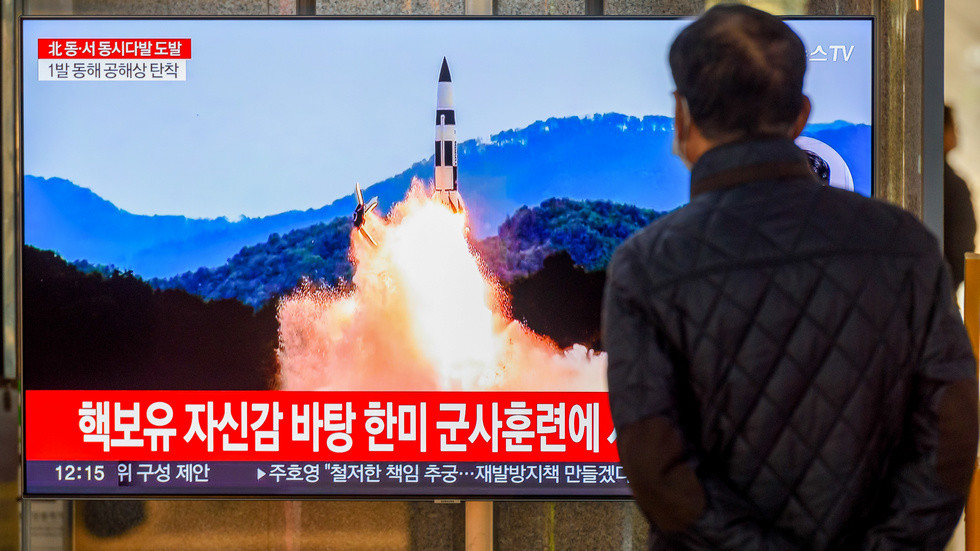On a recent Thursday, North Korea conducted a significant test of an intercontinental ballistic missile (ICBM), which lasted 87 minutes and reportedly reached an altitude of 7,000 kilometers, according to Japanese and South Korean officials. This missile launch, described as “crucial” by a spokesman from North Korea’s Defense Ministry, was personally ordered by leader Kim Jong-un. The state-run KCNA news agency interpreted the event as a demonstration of North Korea’s strategic missile capabilities and the modernity of its formidable deterrence. Although the type of ICBM was not disclosed, the test was positioned as a necessary action in response to perceived threats from regional adversaries, specifically citing recent actions by the United States and South Korea that have escalated tensions in the area.
In his statement, Kim Jong-un expressed that the missile test served as an appropriate military response to what he characterized as a dangerous escalation of nuclear alliances and military maneuvers by foreign nations that threaten North Korea’s security. The North Korean leader framed the test as a vital step in fortifying the nation’s nuclear arsenal, which he claims is essential amidst increasing pressures and hostilities from its neighbors. This rhetoric underscores the North Korean regime’s longstanding strategy of leveraging military advancements to assert its sovereignty and project power in a region characterized by ongoing geopolitical tensions.
The South Korean Joint Chiefs of Staff corroborated details about the missile launch, indicating that it was executed on a “lofted trajectory” which is intended to maximize altitude rather than horizontal range. Specifically, South Korean and Japanese officials noted that the missile’s flight path culminated with it splashing down approximately 300 kilometers west of Okushiri Island. Defense Minister Gen Nakatani of Japan remarked on the record-setting flight duration of this missile, analyzing that it traveled 1,000 kilometers horizontally while taking 87 minutes to complete its flight. The test was recognized as a notable milestone in North Korea’s ongoing pursuit of developing more advanced missile technology.
In response to the ICBM launch, the United States Indo-Pacific Command issued a statement condemning North Korea’s actions, urging the nation to avoid further destabilizing acts. The command clarified that the missile launch did not pose an immediate threat to American personnel, territory, or its allies, although it added to the existing concerns regarding North Korea’s expanding missile capabilities. Such missile tests are typically viewed with alarm by neighboring countries, particularly amid the fraught relations resulting from North Korea’s nuclear ambitions, which challenge regional stability.
Historically, North Korea has frequently launched missiles in the face of joint military exercises conducted by the United States and South Korea, perceiving these drills as rehearsals for invasion. Recently, North Korean officials criticized South Korea for disseminating propaganda leaflets, which they view as provocations. In a further demonstration of their discontent, North Korea recently destroyed a bridge and rail line section along the border with South Korea, highlighting the volatile nature of inter-Korean relations. These actions reflect a broader strategy employed by North Korea to showcase military prowess and to deter what it perceives as external aggression.
The implications of North Korea’s ICBM test extend beyond regional dynamics, raising pertinent concerns about global security and non-proliferation efforts. As tensions continue to escalate in East Asia, the international community remains watchful of North Korea’s advancements in missile technology and nuclear capabilities. Countries in the region, including Japan and South Korea, are likely to enhance their military preparedness in response to these developments, potentially leading to an arms race and further instability. The situation underscores the complexity of diplomatic efforts aimed at curbing North Korea’s militarization while navigating the intertwined interests of regional powers, making the quest for lasting peace and security in the area increasingly challenging.

